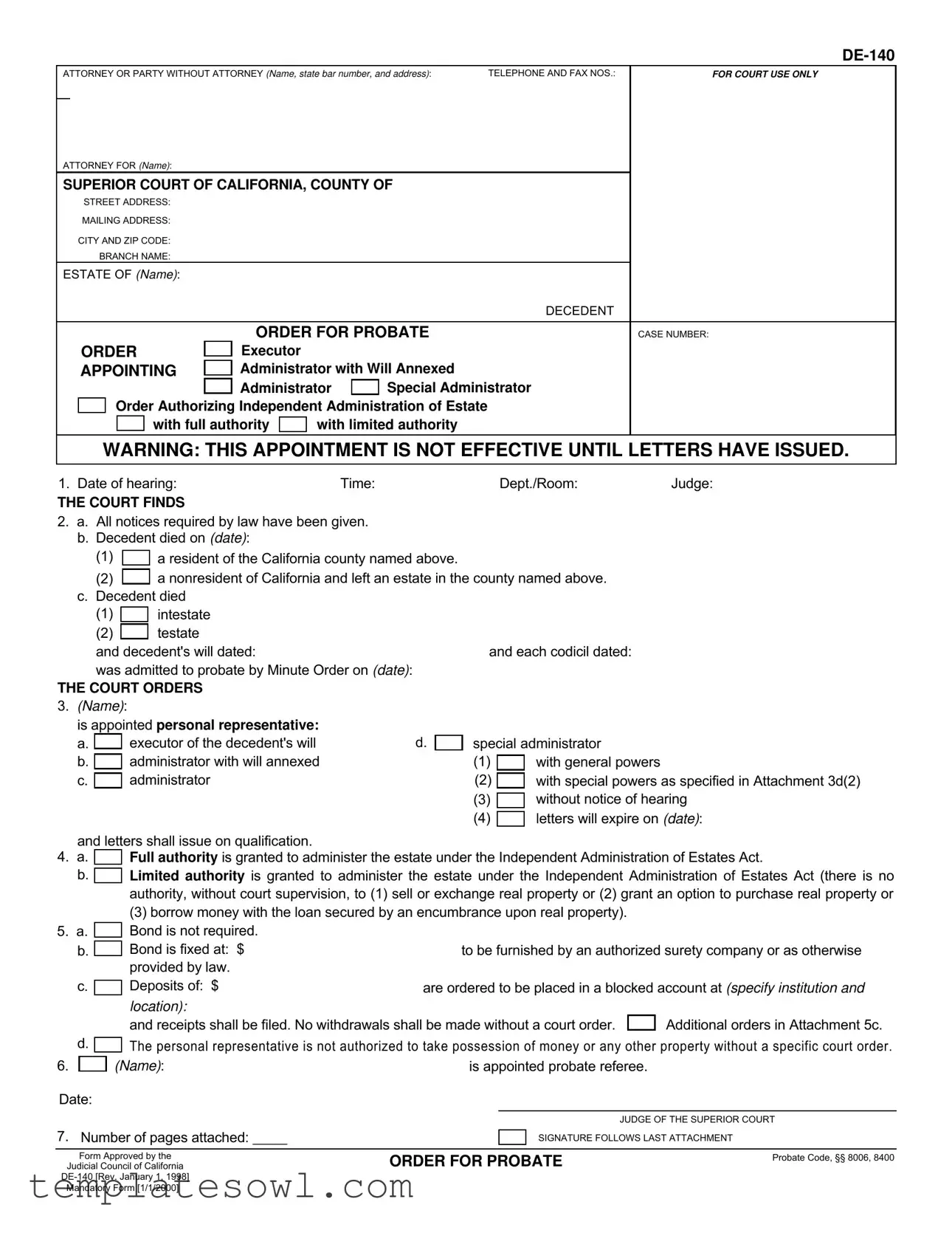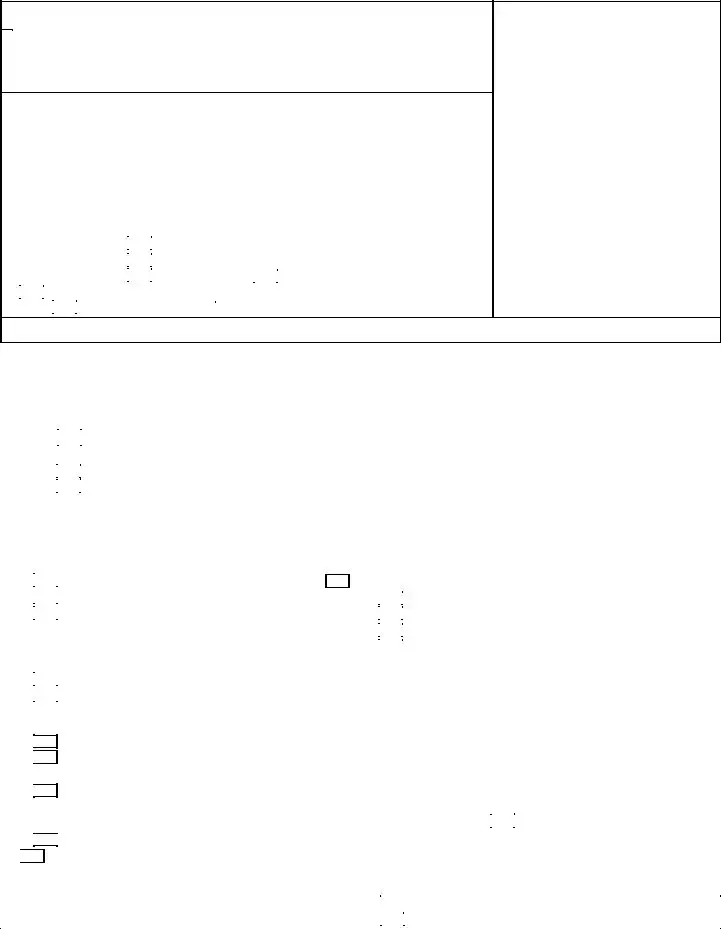What is the DE-140 form used for?
The DE-140 form, also known as the Order for Probate, is used in California to initiate the probate process. It formally requests the court to appoint a personal representative to manage the estate of a deceased person, whether they left a will or died intestate (without a will).
Who can file the DE-140 form?
Any interested party, which can include beneficiaries or heirs of the deceased, can file the DE-140 form. If there is an attorney involved, they can also file it on behalf of their client. It’s essential that the person filing has the legal standing to do so, which generally means they have a direct interest in the estate.
What information do I need to provide on the DE-140 form?
Details such as the decedent’s name, date of death, details about their residency, and any will or codicils should be included. You also need to provide information about the proposed personal representative, including their name and relationship to the decedent, as well as any relevant information regarding their authority to act in this role.
What happens after I submit the DE-140 form?
Once the form is submitted, a court hearing will be scheduled. You will receive a notice regarding the date, time, and location of this hearing. It’s vital to ensure that all required notices are given to interested parties prior to the hearing. The court will then decide whether to approve the appointment of the personal representative.
What is meant by "executor" and "administrator" in the context of the DE-140 form?
An executor is someone appointed to carry out the terms of a will. If there’s no will, the appointed person is referred to as an administrator. Both roles involve managing the estate’s assets, settling debts, and distributing property according to the law or the terms of the will.
What is the significance of “letters” mentioned in the DE-140 form?
Letters, referred to in the form, are official documents issued by the court that confer authority to the personal representative to act on behalf of the estate. It’s essential to understand that without the issuance of these letters, the appointment is not effective, meaning the personal representative cannot take any actions related to the estate.
What is independent administration, and how does it affect the personal representative?
Independent administration allows the personal representative to manage the estate without needing court supervision for routine matters. There are two levels of authority: full authority, which permits actions like selling property, and limited authority, which restricts certain actions unless further court approval is obtained. This flexibility can help streamline the management process of the estate.
Are there any fees associated with the DE-140 form?
Yes, there may be filing fees associated with the DE-140 form. In addition to the court's fee for processing the probate application, there could be costs involved in notifying interested parties, attorney fees if you hire legal assistance, and any other related expenses. It's wise to check with the court and consider budgeting for these costs.













 The personal representative is not authorized to take possession of money or any other property without a specific court order.
The personal representative is not authorized to take possession of money or any other property without a specific court order.